K-9: Mind Snap
 Australia’s Nine Network airs the 22nd episode of K-9. The Australian-made series features no Doctor Who-related characters other than K-9.
Australia’s Nine Network airs the 22nd episode of K-9. The Australian-made series features no Doctor Who-related characters other than K-9.
More about K-9 in the LogBook
K-9 now streaming on Amazon Prime
Eureka: You Don’t Know Jack
![]() Syfy airs the 41st episode of the science fiction series Eureka, starring Colin Ferguson, Salli Richardson, and Joe Morton.
Syfy airs the 41st episode of the science fiction series Eureka, starring Colin Ferguson, Salli Richardson, and Joe Morton.
More about Eureka in the LogBook and theLogBook.com Store
Eureka now streaming on Amazon Prime
STS-128
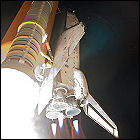 Space Shuttle Discovery lifts off on the 128th shuttle flight, a two-week mission to the International Space Station. Supplies and equipment are delivered to the space station in a cargo-bay-mounted logistics module. Aboard Discovery for her 37th flight are Commander Rick Sturckow, Pilot Kevin Ford, and mission specialists Jose Hernandez, Danny Olivas, Nicole Stott, Christer Fuglesang and Patrick Forrester. Stott remains on the International Space Station, while station crewmember Timothy Kopra returns to Earth aboard the shuttle.
Space Shuttle Discovery lifts off on the 128th shuttle flight, a two-week mission to the International Space Station. Supplies and equipment are delivered to the space station in a cargo-bay-mounted logistics module. Aboard Discovery for her 37th flight are Commander Rick Sturckow, Pilot Kevin Ford, and mission specialists Jose Hernandez, Danny Olivas, Nicole Stott, Christer Fuglesang and Patrick Forrester. Stott remains on the International Space Station, while station crewmember Timothy Kopra returns to Earth aboard the shuttle.
Eureka: E=MC…?
 Sci-Fi Channel airs the 20th episode of the quirky modern-day science fiction series Eureka, starring Colin Ferguson, Salli Richardson, Debrah Farentino, and Joe Morton. Niall Matter (Primeval: New World) guest stars.
Sci-Fi Channel airs the 20th episode of the quirky modern-day science fiction series Eureka, starring Colin Ferguson, Salli Richardson, Debrah Farentino, and Joe Morton. Niall Matter (Primeval: New World) guest stars.
More about Eureka in the LogBook and theLogBook.com Store
Eureka now streaming on Amazon Prime
Stargate SG-1: Bane
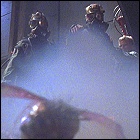 Pay cable channel Showtime premieres the 31st episode of Stargate SG-1. Tom McBeath guest stars.
Pay cable channel Showtime premieres the 31st episode of Stargate SG-1. Tom McBeath guest stars.
More about Stargate SG-1 in the LogBook and theLogBook.com Store
Stargate SG-1 now streaming on Amazon Prime
Voyager: The 37s
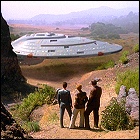 UPN airs the 16th episode of Star Trek: Voyager, the first episode of the show’s second season. Sharon Lawrence (NYPD Blue) and David Graf (Police Academy) guest star.
UPN airs the 16th episode of Star Trek: Voyager, the first episode of the show’s second season. Sharon Lawrence (NYPD Blue) and David Graf (Police Academy) guest star.
More about Star Trek: Voyager in the LogBook and theLogBook.com Store
Star Trek: Voyager now streaming on Paramount Plus
Galileo eyes Ida
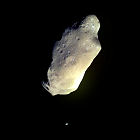 Bound for Jupiter, the NASA/JPL unmanned space probe Galileo swings past the asteroid Ida, discovering – for the first time – an asteroid with its own satellite, a tiny body orbiting Ida. The satellite is later named Dactyl. This is only the second asteroid to be visited by a spacecraft from Earth, and Ida also marks Galileo’s last visit to a body in the solar system before a two-year cruise toward Jupiter.
Bound for Jupiter, the NASA/JPL unmanned space probe Galileo swings past the asteroid Ida, discovering – for the first time – an asteroid with its own satellite, a tiny body orbiting Ida. The satellite is later named Dactyl. This is only the second asteroid to be visited by a spacecraft from Earth, and Ida also marks Galileo’s last visit to a body in the solar system before a two-year cruise toward Jupiter.
Voyager 2 outbound
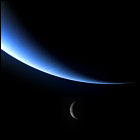 NASA’s unmanned Voyager 2 space probe leaves the vicinity of the planet Neptune, the outermost planet to have been explored by a man-made spacecraft. (At this point in time, Pluto is still considered a planet – the only one to which NASA hasn’t sent a space probe – though by the time a vehicle is dispatched to Pluto in the 21st century, Pluto has been demoted to “minor planet” status.) Though not expected to function beyond 2025 due to the slow decay of its nuclear power source, Voyager 2 may survive long enough to pass within 25,000,000,000,000 miles of Sirius in a quarter of a million years.
NASA’s unmanned Voyager 2 space probe leaves the vicinity of the planet Neptune, the outermost planet to have been explored by a man-made spacecraft. (At this point in time, Pluto is still considered a planet – the only one to which NASA hasn’t sent a space probe – though by the time a vehicle is dispatched to Pluto in the 21st century, Pluto has been demoted to “minor planet” status.) Though not expected to function beyond 2025 due to the slow decay of its nuclear power source, Voyager 2 may survive long enough to pass within 25,000,000,000,000 miles of Sirius in a quarter of a million years.
Qix
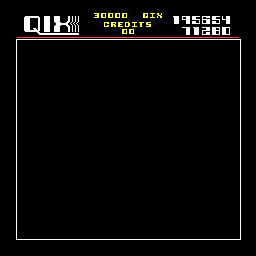 The first game generated by west coast programmers working for Taito’s new American game design division, Qix hits the arcades, reeling players in with its weird sound effects, abstract game play, and an enemy that anticipates the look of Windows screen savers years before either Windows or screen savers exist. Qix becomes an instant cult classic, though it proves to be nearly impossible to replicate with the current generation of home video game hardware.
The first game generated by west coast programmers working for Taito’s new American game design division, Qix hits the arcades, reeling players in with its weird sound effects, abstract game play, and an enemy that anticipates the look of Windows screen savers years before either Windows or screen savers exist. Qix becomes an instant cult classic, though it proves to be nearly impossible to replicate with the current generation of home video game hardware.
Wonder Woman: The Man Who Could Not Die
 The 57th episode of Wonder Woman airs on CBS starring Lynda Carter and Lyle Waggoner. This episode is directed by John Newland (One Step Beyond).
The 57th episode of Wonder Woman airs on CBS starring Lynda Carter and Lyle Waggoner. This episode is directed by John Newland (One Step Beyond).
More about Wonder Woman in the LogBook and theLogBook.com Store
Wonder Woman now streaming on Amazon Prime
This series is not yet fully chronicled in the LogBook. You could help change that.
Mike Oldfield: Hergest Ridge
 Virgin Records releases Mike Oldfield‘s second prog-rock instrumental album, Hergest Ridge, the eagerly-awaited follow-up to his debut LP, Tubular Bells.
Virgin Records releases Mike Oldfield‘s second prog-rock instrumental album, Hergest Ridge, the eagerly-awaited follow-up to his debut LP, Tubular Bells.
The Guardians: The Dirtiest Man In The World
 London Weekend Television airs the eighth episode of the alternate-future-history series The Guardians, starring Gwyneth Powell and Cyril Luckham.
London Weekend Television airs the eighth episode of the alternate-future-history series The Guardians, starring Gwyneth Powell and Cyril Luckham.
This series is not yet chronicled in the LogBook. You could help change that.
Nimbus-1
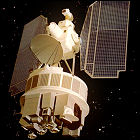 NASA and the United States Weather Bureau launch the first test article of the next-generation weather satellite, Nimbus-1. Using the more advanced camera technology (including infrared filters to watch cloud motion even on Earth’s night side) tested aboard TIROS-8, Nimbus-1 provides a vast improvement on satellite weather observations over the hardware on the TIROS experimental satellites. The first Nimbus satellite remains in service for only a month; later Nimbus satellites continue to be launched into service well into the late 1970s, and most of them remain operational into the 1980s.
NASA and the United States Weather Bureau launch the first test article of the next-generation weather satellite, Nimbus-1. Using the more advanced camera technology (including infrared filters to watch cloud motion even on Earth’s night side) tested aboard TIROS-8, Nimbus-1 provides a vast improvement on satellite weather observations over the hardware on the TIROS experimental satellites. The first Nimbus satellite remains in service for only a month; later Nimbus satellites continue to be launched into service well into the late 1970s, and most of them remain operational into the 1980s.
 using WordPress and
using WordPress and